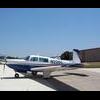JPI 830 settings for a 231
-
Members Online
- Jackk
- Guy123
- Robm
- MikeOH
- redbaron1982
- pkellercfii
- DCarlton
- Skates97
- 76Srat
- Hank
- eman1200
- ad5ut
- 00-Negative
- caractacuspdoom
- EricJ
- Bolter
- good2eat
- Dammit Bill
- exM20K
- 47U
- SteveL67
- Jim Peace
- aviatoreb
- Schllc
- GeeBee
- Rick Junkin
- Gilt
- Joe Linnebur
- Nippernaper
- FlyboyKC
- rahill
- takair
- M20S Driver
- jeremyc209
- Cfidave
- ElkoRandy20J
- Av8trinxs
- Pinecone
- 201er
- mluvara
- Little Dipper
- ckb
- IvanP
- Macsav


Recommended Posts
Join the conversation
You can post now and register later. If you have an account, sign in now to post with your account.